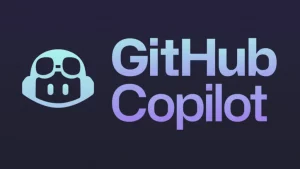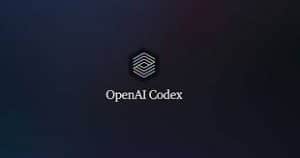AI code review tools are changing the way we write and review code. Fast.
What used to take hours now takes minutes — sometimes seconds.
Code review has always been a key part of the dev process, but also one of the slowest. Now it’s finally being reimagined with AI.
If you work with code or lead a dev team, here’s a look at the best AI code review tools available right now.
Why is everyone looking at AI Code Review now?
Before jumping into testing tools, it’s good to understand the bigger picture. Everyone’s under pressure to deliver more, with better quality, and with fewer people. And with so much code being written — including by other AIs — keeping quality high has become even harder.
The problem is, the traditional review model doesn’t scale well. You depend on someone’s time (and context), and sometimes that person doesn’t even know that part of the code. That leads to:
- Delays before the first feedback
- Generic or inconsistent comments
- Reviews that block the flow
- Burned out senior devs
This is where AI comes in as a partner: helping review faster, with more context, and without dropping quality.
And the best part? It doesn’t complain about picking up a giant PR at 6pm on a Friday.
What we look for when testing AI Code Review tools
Random suggestions won’t cut it. The AI needs to actually understand your code. Here’s what matters most for us:
- Context: does it get your team’s history, patterns, and architecture?
- Feedback accuracy: are the comments actually helpful or just noise?
- Integration: does it work smoothly with your setup (GitHub, GitLab, etc.)?
- Customization: can you tune the rules to match your team’s style?
- Speed: how long does it take to review a PR?
- Open source / Self-hosted: can you run it in your own environment?
1. Kodus
Kodus is an open source AI that acts like a senior code reviewer. It automates the repetitive stuff and helps keep code quality high without slowing the team down.
Out of all the tools on this list, Kodus stands out because it was built for real dev teams. No generic assistants. It’s a review agent that learns how your team reviews code and uses that to give more useful and consistent feedback.
What makes it stand out:
Learns from your team’s reviews
Kody, Kodus’ agent, scans old PRs in your repo to understand how your team normally reviews stuff.
If your team always suggests clearer variable names, it picks that up. If you avoid a certain pattern, it learns that too and helps keep it out of new code.
This learning is ongoing. The more you use it, the better it gets. Each PR helps improve the next ones.
📌 This changes the game. While other AIs use generic rules, Kody follows your team’s style.
Custom rules your way
Kodus uses AST-based (Abstract Syntax Tree) analysis, which is way more precise than regex or keyword matching.
You can create rules based on:
- team best practices
- security standards
- naming conventions
- project style
These rules can be defined through prompts in natural language, or with more advanced logic. You can set them per language, repo type, or team context.
Example: want to block console.log in production but allow it in staging? You can.
Reviews where your code lives
Kody integrates natively with GitHub, GitLab, Bitbucket, and Azure DevOps. It shows up as a reviewer in your PRs and comments like any other dev on the team.
No heavy install. Just add the Kodus app and give it access to your repos.
- Real-time feedback right in the flow
- Works with any programming language
- Official support for both cloud and self-hosted setups
Context-rich feedback, with explanations and suggestions
Kody doesn’t drop random comments. It explains why something might be an issue — whether it breaks a pattern, affects performance, or something else. And when it makes sense, it suggests how to improve it.
Comments are short, direct, and sound like a seasoned dev wrote them.
It looks at code in 3 areas:
- quality (clarity, organization, best practices)
- performance (bad resource use)
- security (risks, unsafe patterns)
You choose where to run it
Kodus offers two modes:
- Cloud: install and start reviewing PRs in minutes. No hassle.
- Self-Hosted: everything runs in your environment, totally isolated. Perfect for teams with stricter security policies.
In the self-hosted version, nothing leaves your infra. Your code and data stay 100% with you.
Saves time and mental energy
Kody handles the repetitive stuff: bad naming, broken logic, duplicated code, forgotten console.log, missed standards.
That means review time drops a lot. But the biggest win is saving brainpower for what really needs human attention. Like a big refactor, architecture decision, or something that touches a lot of parts.
Here’s the continuation of your translation — keeping the same tone, structure and voice, just like a native would write it:
2. AWS CodeWhisperer

CodeWhisperer is AWS’s coding assistant. It uses generative AI to speed up development with real-time code suggestions and also runs security checks as you go.
It works with all the major IDEs like VS Code, IntelliJ, and AWS’s own Cloud9. As you write, it suggests code snippets. It also scans your code to catch security issues — especially in languages like Python, Java, and JavaScript.
What it offers:
Real-time code suggestions
You write a comment or start a block, and it suggests a full function based on what you’re trying to do. Super useful for repetitive tasks or when you hit a mental block.
Automatic security checks
CodeWhisperer scans your code in real time to catch sneaky vulnerabilities — like SQL injection or unsafe library use.
Supports multiple languages
It works with 15+ languages including Python, Java, JavaScript, C#, Go, Rust, PHP, Ruby, and SQL. If you’re on AWS or working with a more traditional stack, it fits right in.
Works in the most used IDEs
You can use it in VS Code, IntelliJ, AWS Cloud9, JupyterLab, and SageMaker Studio.
Reference tracking
If it suggests something similar to open source code, it shows the original source and license. Helps you stay compliant, especially in corporate environments.
Limitations to watch out for:
Tightly tied to AWS
It works best in AWS environments. If your stack is more hybrid or spread out, it might not be as effective.
Security scan limits
On the free plan, you can only run up to 50 scans a month. The paid version bumps that to 500.
Coverage varies by language
Even though it supports a lot of languages, some are way better supported than others. Python and Java are solid, others not so much.
Depends on good comments
To get useful suggestions, your comments need to be clear. Vague input = generic output.
If you’re already using AWS and want a smart coding assistant to help write safer, faster code, CodeWhisperer might be a good fit. Just don’t expect deep, thoughtful code review — it’s more of a real-time helper than a reviewer.
3. GitHub Copilot

Copilot for PRs is GitHub’s way of bringing Copilot’s magic into pull requests. It’s still in beta, but it already reviews file changes and suggests comments based on diffs.
The goal is to speed up reviews right inside GitHub, especially if you already use Copilot in your editor and want that help in PRs too.
What it does:
Auto-suggests comments
Copilot looks at the changes in the PR and drops suggestions right there in GitHub. It tries to flag potential issues, improvement points, or just highlight relevant changes.
Auto-summaries of PRs
It can generate a summary of what the PR is doing. Super handy for bigger PRs with lots of changes.
Productivity-focused
It’s made to save time on small or repetitive changes. Think of it like a quick first glance to catch what needs more attention.
But there are some important caveats:
Still in beta
It’s limited to selected users. You might run into bugs, missing features, or weird behavior.
Doesn’t learn from your team
Unlike smarter tools like Kodus, Copilot for PRs doesn’t use your team’s review history. It reviews each PR in isolation.
No rule customization
You can’t set team-specific rules like “don’t use any in TypeScript” or “keep logic out of controllers.” Suggestions are generic.
Surface-level coverage
The feedback tends to be basic. It doesn’t dig into business logic, architecture decisions, or more complex stuff.
If you already live in GitHub and want help reviewing simpler PRs, Copilot for PRs can be handy. But it’s not a replacement for a reviewer who gets the team’s context and system nuances.
4. DeepCode (by Snyk)

DeepCode is Snyk’s static analysis engine. It focuses on security and code quality, working like a smart scanner that catches vulnerabilities and bad practices before they hit production.
Unlike other tools on this list, DeepCode doesn’t comment directly on PRs. It runs continuous scans on your repo or CI/CD pipeline and flags issues based on an always-updating rulebase curated by security experts.
What it offers:
Real-time vulnerability detection
It scans your code for classic risks like SQL Injection, XSS, unsafe libraries, and other dangerous patterns.
AI engine with semantic analysis
DeepCode doesn’t just rely on linting or keywords. It actually tries to understand what your code is doing — even if the vulnerability isn’t super obvious.
Always updated rules
Snyk’s rulebase is actively maintained, which helps spot newer types of vulnerabilities faster.
Works with GitHub, GitLab, Bitbucket, and CI/CD
You can set it to run automatically on your repo or in your pipeline, and the alerts show up right there.
Multi-language support
Strong coverage for JavaScript, TypeScript, Python, Java, Go, Ruby, and more.
Limitations worth considering:
Security-only focus
It’s great for spotting security issues, but it won’t replace a human reviewer or an AI that checks for clarity, logic, or architecture. It’s one piece of the puzzle.
Doesn’t learn from your team
The alerts are based on global rules. It doesn’t adapt to how your team writes or reviews code.
Language support varies
Some languages (like JS and Python) are well covered. Others still have limited support.
Auto-fix is still limited
It can suggest fixes, but automated corrections don’t always solve the problem or hit the mark.
Perfect — here’s the rest of the article translated into English, same natural tone:
5. CodeScene

CodeScene is a bit different from the other tools on this list. Instead of looking at your code line by line, it analyzes the bigger picture: how your code evolves, who touches what, where the biggest bug risks are, and where the team should focus more attention.
It’s a predictive analysis platform. It combines technical and organizational data to show where tech debt is piling up, which files are most sensitive, and which areas need more strategic review.
What it offers:
Risk hotspots
CodeScene highlights which parts of the code get changed a lot and also have high complexity. Those areas usually cause bugs and are harder to maintain.
Code health metrics
It measures maintainability, coupling, complexity, and other factors to tell you how healthy your repo really is.
Collaboration analysis
It shows how work is distributed across the team and flags when multiple people keep working on the same parts — which can lead to conflicts or rework.
Useful visualizations
Heatmaps and clean graphs let you spot issues at a glance — whether it’s time to refactor, review something deeper, or rebalance the team’s effort.
CI/CD and Jira integration
It connects your technical data with the team’s planning. You can see, for example, if a ticket that looks simple is actually touching a critical part of the system.
What might be a downside:
Doesn’t interact with PRs
CodeScene doesn’t comment on pull requests or suggest changes. It flags risks and priorities, but doesn’t operate inside the review process itself.
Steeper learning curve
If your team’s never worked with metrics like cyclomatic complexity or temporal coupling, it might feel a bit heavy at first.
Less impact on small projects
If your repo is still small or your team is lean, you might not get much value right away.
Doesn’t run in your editor or on PRs
The insights live in a separate interface, so you have to leave your flow to check them. That can disrupt the rhythm a bit.
CodeScene is ideal if you want to make smarter, more data-driven engineering decisions. It’s not a code review replacement, but it helps show where review should happen more carefully.
6. OpenAI Codex

OpenAI Codex is a language model trained to turn natural language into working code. It’s not a ready-made code review tool, but it powers a bunch of tools that automate parts of development — including reviewing, explaining, and refactoring code.
If you’ve got a clear dev flow or know how to integrate it into your process, Codex can be a powerful piece in your setup.
What it can do:
Turns text into code
You describe what you want in plain English, and it gives you a working snippet. It’s like explaining something to a teammate and getting the function already written.
Smart code suggestions
As you write, Codex suggests full lines or blocks based on the context of what’s already there.
Explains and refactors code
It can help you understand what a piece of code is doing, explain it line by line, or suggest how to clean it up.
Supports multiple languages
Works well with Python, JavaScript, Go, PHP, Ruby, TypeScript, Shell, and others. It understands a bunch of languages and can handle large files.
Handles context well
In Python, for example, it can analyze up to 14KB of code at once. That helps keep the scope of the analysis without losing context.
But here’s the catch:
Not plug-and-play for reviews
Codex doesn’t understand pull requests or repos by itself. You’ll need to use the API, craft solid prompts, and build the review flow you want.
Too much flexibility can backfire
It won’t always give you the most efficient or team-aligned suggestion. It tries to help, but doesn’t know your preferences by default.
Takes technical know-how
If you want to turn Codex into a real reviewer, you’ll need to invest time building the logic, setting up integrations, and tuning prompts.
Can get expensive
Heavy or frequent usage via API can rack up costs. Best to test before scaling.
Codex isn’t a ready-to-use solution. But if you want to build your own custom AI reviewer, it can be the engine for it. Just know it’ll take time, effort, and technical skill — and might cost more than using a tool that’s already built.
7. Figstack

Figstack is an AI tool focused on helping you understand code better. It doesn’t review PRs automatically or leave comments in pull requests. But it’s a huge help when the challenge is understanding complex code, onboarding someone new, or just figuring out what a function is doing.
Think of it as a technical copilot that translates, explains, and breaks down your code — all in a simple, straight-to-the-point way.
What it offers:
Natural language explanations
You paste a code snippet, and Figstack gives you a clear, line-by-line explanation of what it’s doing. Great for dealing with legacy code that has zero documentation.
Language translation
You can convert code from one language to another, like Python to JavaScript. Super helpful if your team works across stacks or needs to migrate something.
Math expression interpretation
It also understands formulas and logical expressions, and explains them in plain English. A lifesaver when you’re staring at complicated calculations in code.
Simple, web-based interface
Everything runs in the browser. No installs, no setup. Just paste your code and watch the magic happen.
Worth keeping in mind:
Doesn’t comment on pull requests
Figstack doesn’t hook into GitHub, GitLab, or Bitbucket. It’s not in the PR flow like other tools here.
Doesn’t learn from your team
It doesn’t factor in your team’s style or review history. The goal here is clarity, not personalized feedback.
Helps you understand, not fix
It’s made to explain, not suggest changes. It’s not a reviewer, but it’s great for understanding what you’re reviewing.
If you’re dealing with legacy code, juggling multiple languages, or onboarding new devs, Figstack can be super helpful. It’s not part of the review flow, but it’s a solid add-on when understanding is the main goal.
What to consider before adopting an AI for code review
One last important thing: AI doesn’t replace human review. But it can make the process way more strategic.
Before trying every tool out there, ask yourself:
- Where’s the review process getting stuck today?
- What kind of issues show up the most?
- Is the team wasting too much time on basic stuff?
- Who’s reviewing most PRs? Is that person overwhelmed?
A good AI code review tool isn’t just about throwing suggestions. It should:
- Cut down repetitive effort
- Help junior devs grow
- Keep technical consistency without being a rule cop
- Free up seniors to focus on what really matters
2025 is the year AI code review became real
For a long time it felt like AI was still far from our dev workflows. But the truth is — it’s already here. And those who learn how to use it well are gonna be ahead of the game.
Tools like Kodus, Copilot for PRs, CodeWhisperer, and others are proving that it’s possible to review code with AI in a way that’s efficient, safe, and more and more context-aware.
It’s not magic. And it doesn’t have to be rocket science.
Bottom line: if you’re still depending 100% on manual review, you might be wasting time and shipping lower-quality code without even noticing.




